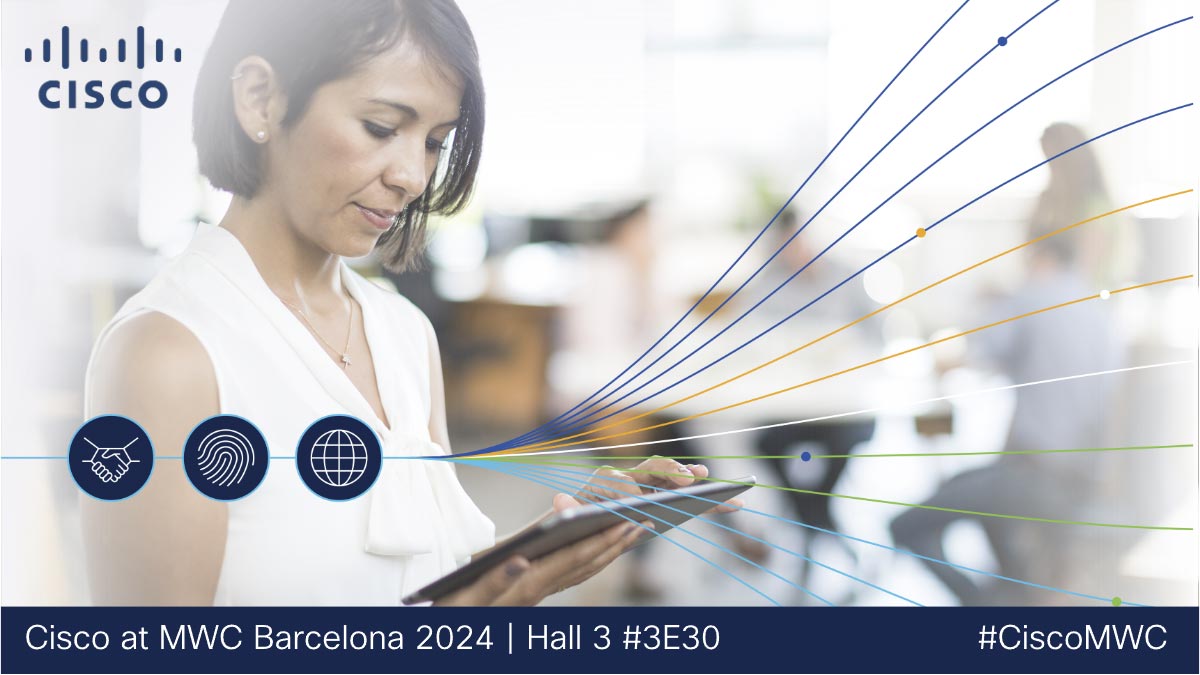When the likes of Taylor Swift, Beyonce, Paul McCartney, and U2 prepare for a major tour, they descend on an unlikely setting: Lititz, Pennsylvania.
Located in the heart of Amish Country, it’s the home of Rock Lititz, a massive rehearsal space and “living lab” where the most complex and vibrant live music shows are designed, tested, and rehearsed to perfection.
Today, perfection demands a high-speed, low-latency, and ultra-secure network infrastructure — to support everything from lights, sound, and WiFi to fan interactions, pyrotechnics, and in the case of Pink, safe, precise cable controls that enable her to soar above her adoring fans.
“If you go to a show and you see something new, whether it’s the latest LED wall or someone flying through the air, it’s likely that was designed and developed by someone from this community,” said Andrea Shirk, president and CEO of Rock Lititz. “It’s why the biggest acts continue to rely on Rock Lititz. And from a technology end, our clients are depending on us.”
To help attain the best in live music technology, while keeping a constant eye on the future, Rock Lititz depends on its own partner: Cisco. The two companies share a commitment to bold innovation and practical, reliable tools. So, much of their co-innovation leads to sophisticated yet “bulletproof” technology that’s easy-to-operate and able to withstand the rigors of a major concert tour.
Ben Harris is the network architect for Clair Global, one of the co-founding organizations in Lititz. Today, the Lititz campus is home to dozens of companies, all dedicated to exceptional live concert experiences. He shared his thoughts on his team’s deep partnership with Cisco.
“As soon as you put us in the room with the Cisco folks,” he said, “we start talking about how we can make the concert experience better for everyone: the artists, the concert goers, the crew. And then we talk about what does the concert of the future look like, what other kinds of experiences can we create?”
Behind every great concert experience: a rugged, reliable network
It’s all about taking chances. But once new systems or products leave the campus, reliability reigns.
“Almost everything involved in the concert is somehow connected to the network these days,” said Harris. “And it’s all mission critical for our clients.”
Mission critical means never disappointing megastars or their rabid followers. So, whether it’s working out the bugs on new gear at the Rock Lititz campus, out on the road with a major stadium tour, or supporting a massive music festival, Clair Global relies on Cisco. And that mutual commitment to cutting-edge innovation and rock-solid reliability is part of what bonds the two companies.
In Clair’s case, the innovation dates to the 1960s, when the original Clair brothers, Roy and Gene, cobbled together powerful, dependable sound systems that proved a revelation for touring bands like Cream and Blood, Sweat, and Tears. In years to come, they honed innovative solutions, including multitrack live mixing, phased-array speaker systems, and on-stage wedge monitors, all of which became industry standards.
“When everything got started,” said Matt Clair, the company’s CIO and a third-generation family member, “the idea of building and traveling with the sound systems was something new. How do you package it to go on a truck, and come off again, to be able to follow these bands around?”
Today, Clair and its many subsidiaries, including the Rock Lititz rehearsal space, are a critical element in a high percentage of major musical events. And they pride themselves on staying ahead of all the possibilities that digital technologies provide. Which is essential, considering that the challenges in live music technology today extend way beyond great sound.
“At festivals,” Clair said, “we’re providing the backbone for point of sale, ticketing, food and beverage, merchandise. Sometimes you’re adding in fan connectivity. Then you’ll have, on top of all that, festival operations, medical, and safety, running on the back of that.”
Innovating like a rock star
Helping to enable all that is Cisco. As with many of its partnerships, Cisco’s role goes beyond that of a typical technology provider. And for Cisco, the expertise and creativity of the Lititz team is a perfect fit.
“They literally live and work like rock stars meaning they are not scared to try something new; they are not risk averse,” said Matt Swartz, a Cisco distinguished engineer who works closely with the Lititz team. “For our team, they provide an amazing opportunity to test new things. And it gives us a view into what a new product is going to look like in the real world.”
In recent years, new Catalyst switches, open roaming, cellular handoff, private 5G, 6Ghz WiFi , and the Cisco DNA Center (to name but a few solutions), have all been tested at Lititz. In fact, when the Catalyst 9104 access point/antenna was first tested at Lititz, it consisted of just circuit boards and an antenna; the casing was still on the drawing board.
“It’s fun for us, we get to try the product to see if we can break it,” Harris joked. “We introduce all kinds of failure modes, like, what if this scenario happens, what if this other piece of equipment goes down? We have that luxury here on the Lititz campus. But once we deploy it on a tour or other event, we have full confidence in it.”
For the Cisco team, that level of real-world feedback is essential to creating a great product.
“It’s a high-stakes, high-pressure environment,” said Rob Neumann, global technology lead for Cisco’s Global Sponsorship Marketing team. “Probably 90 percent of all the top bands go through Lititz, and everything has to be perfect once they go out on tour. For us to co-innovate with a company with that level of expertise in their field is great.”
Harris applauds the ruggedness of Cisco hardware that has held up through massive bandwidth demands, winter tours, desert festivals, and just about anything else they can throw at it.
“We’ve dealt with 100-degree temperatures at Coachella in California and blowing sand at Sound Storm outside Riyad, which is becoming one of the biggest outdoor festivals,” Harris said. “Other times equipment sits in trucks in frigid temperatures before performing in warm buildings. And the failure rate is extremely low.”
High security for high-profile targets
Speaking of resiliency, huge concerts and festivals are tempting targets for hackers. So, cybersecurity is of paramount importance.
“Some of our clients are more conscious of cybersecurity than others,” said Harris. “But we need to assure them that the network is safe and secure. As we get better at networking and security and use the right equipment — much of it from Cisco — we feel confident that the networks are protected for everybody.”
Cisco’s end-to-end security, with encryption and security built into every product from the earliest design stages, was a big selling point, along with dedicated security tools like the Firepower firewall.
“For the tours themselves,” Neumann explained, “they use the Cisco Meraki stack, so they can have a secure connection back to their corporate headquarters, or to the Internet, or while using WiFi. Cisco’s one of the few companies that have an end-to-end solution; security is baked into every product. And with encryption on all the links, it allows customers like Clair to feel protected.”
As for the future, artificial intelligence, Ultra-Wide-Band data transmissions, precise location tracking, and WiFi 6 (and 7!) could all continue to transform musical experiences. Harris, for example, cites the continuing improvements in WiFi and cellular handoff as a key factor in fan satisfaction: “We’re always looking to create the most seamless experience,” he said.
Cisco innovations will continue to add greater capabilities, while simplifying the task of setting up, managing, and maintaining the network.
“Simplicity is a big theme at Cisco,” said Swartz. “As our products grow more powerful, capable, and secure, they also become smaller and easier to operate.”
Cisco products are also becoming more energy efficient, recyclable, and reusable, an important factor for Clair and Rock Lititz.
“They're always looking to reduce their power consumption,” said Neumann. “They are a very green organization, with solar power and environmentally friendly buildings throughout the campus.”
Looking to the future, Matt Clair is excited about the next-level experiences that concertgoers can expect. Ever-improving network speed, bandwidth, security, and latency will make them possible. And his teams — and Cisco’s — are just beginning to imagine them.
Clair was quick to mention a few possibilities, everything from augmented reality and immersive 3D experiences to individual sound mixes and lights or video triggered by an artist’s actions.
“More and more, proximity or location monitoring type technologies are really going to allow these artists to be more spontaneous and run the show on their own,” Clair said. “Whether it’s Bono gesturing, or the Edge hitting a guitar chord, they can cue video systems or lighting systems. You can do some pretty powerful things with that.”
Already, things like LED bracelets, distributed throughout the crowd by artists like Taylor Swift and synched to the music, allow fans to feel part of the visual experience. The network makes it possible.
Whatever the technology enables, the innovation — and the Cisco partnership — show no signs of slowing.
“We’re always keeping an eye out for what's next, and what’s possible” Harris concluded.



